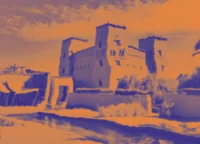Feathers, Ivory and Gold
A classic Morocco 7 days itinerary, with a twist or two Home Feathers, Ivory and Gold ( 7 – 9 days) A private Tour of Morocco that takes in the highlights but also strays off Centuries ago, caravans laden with gold, ivory and feathers were delivering their loads at the sultan’s palace in Marrakech and […]
Feathers, Ivory and Gold Read More »

